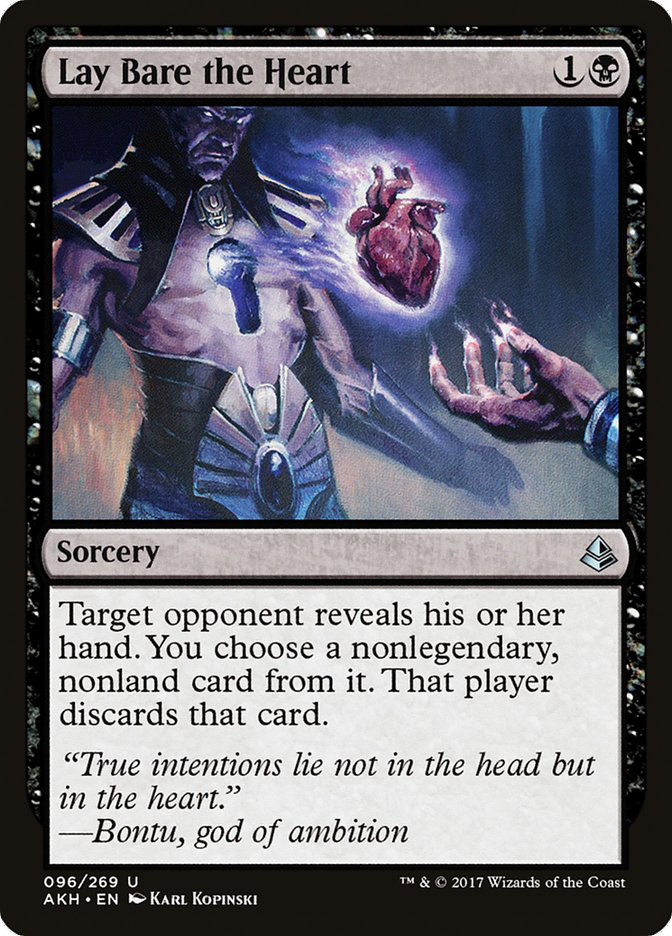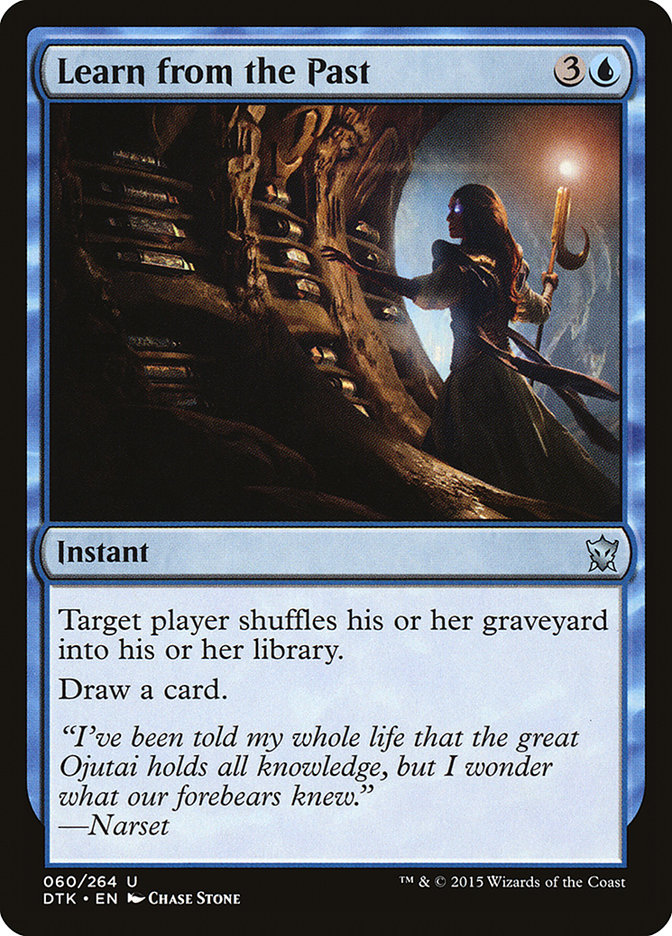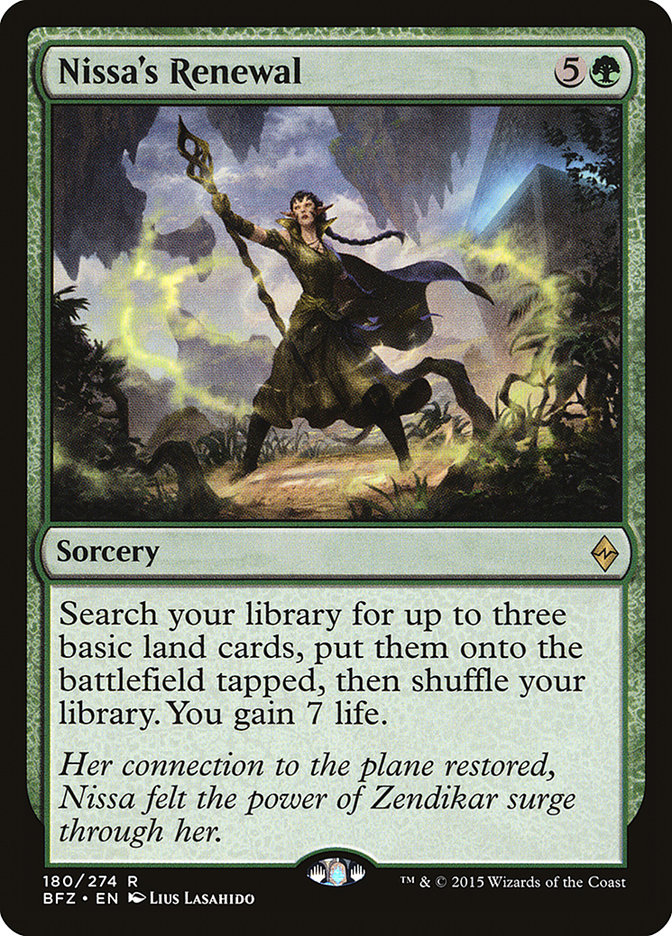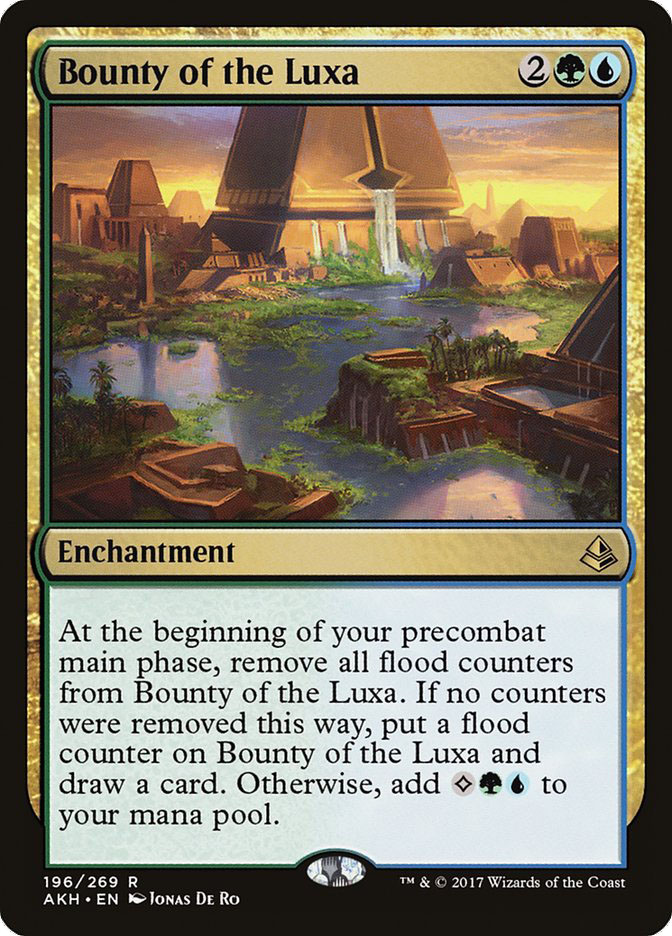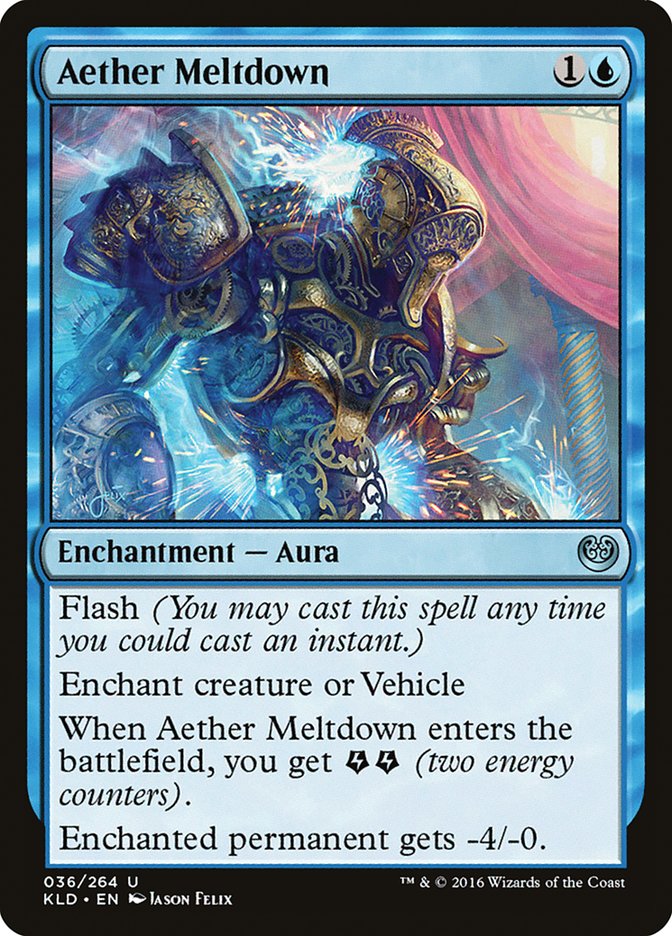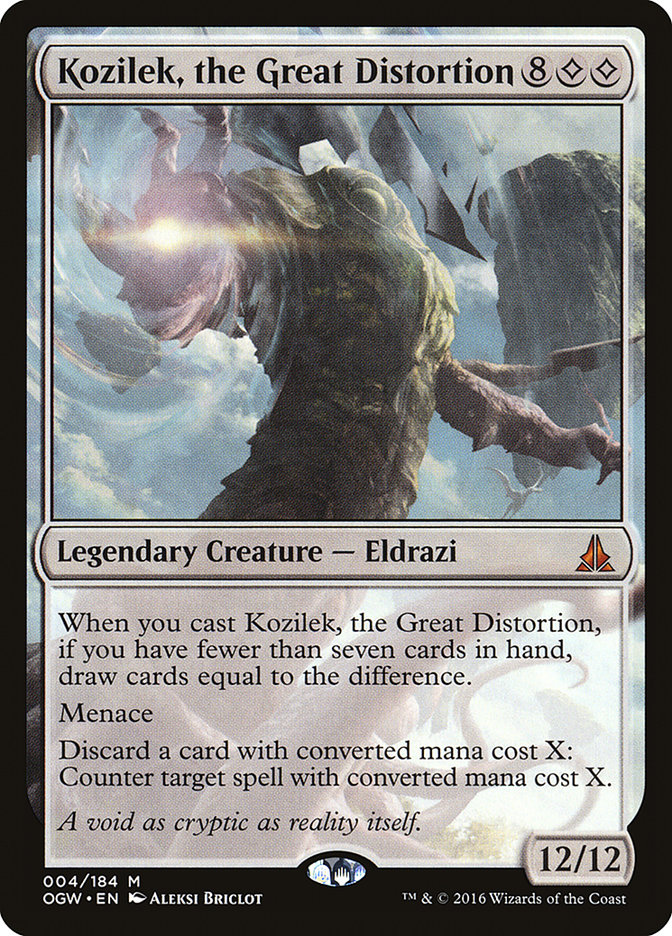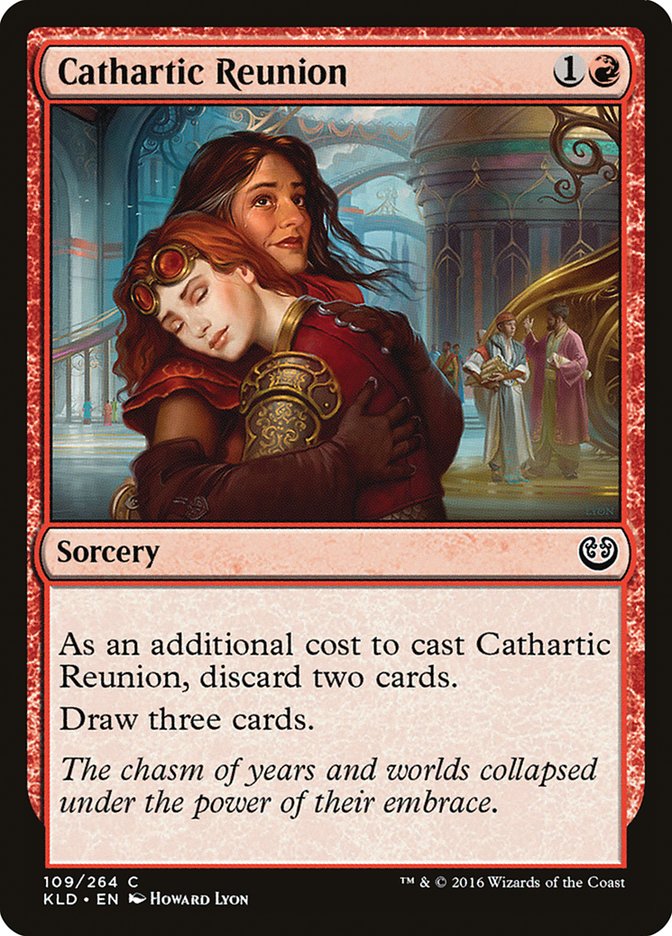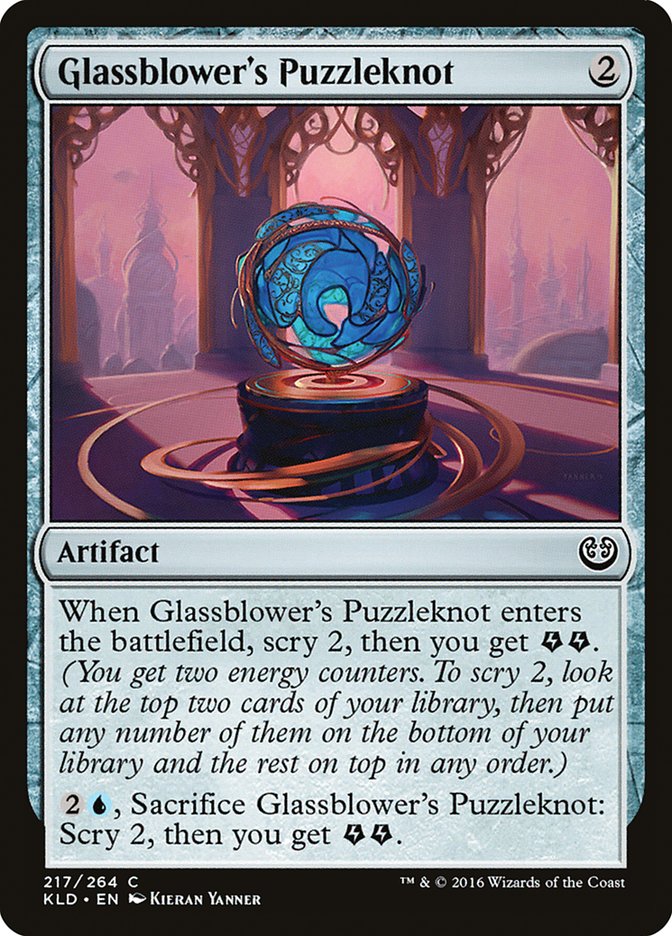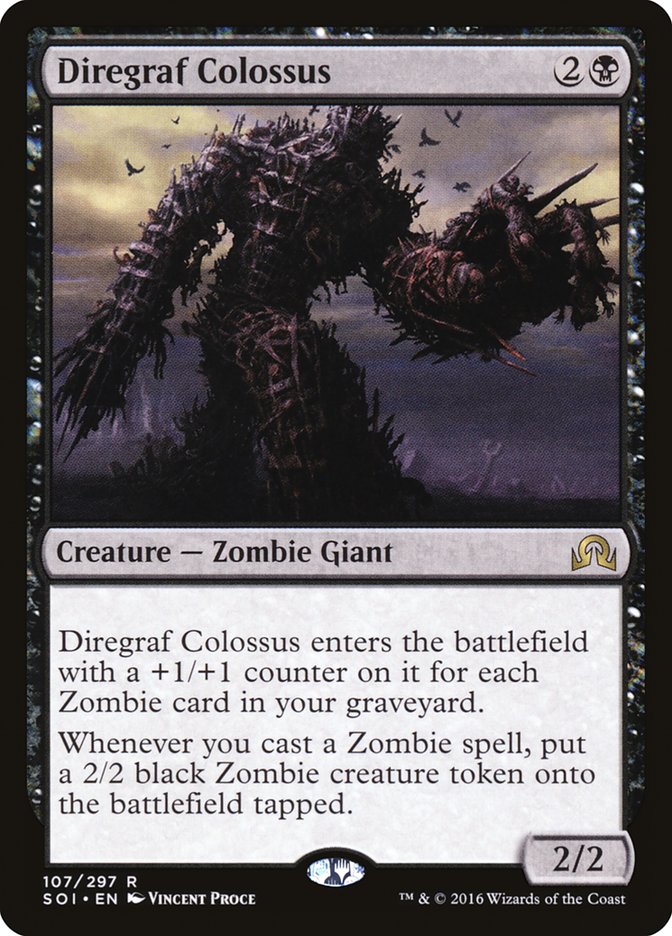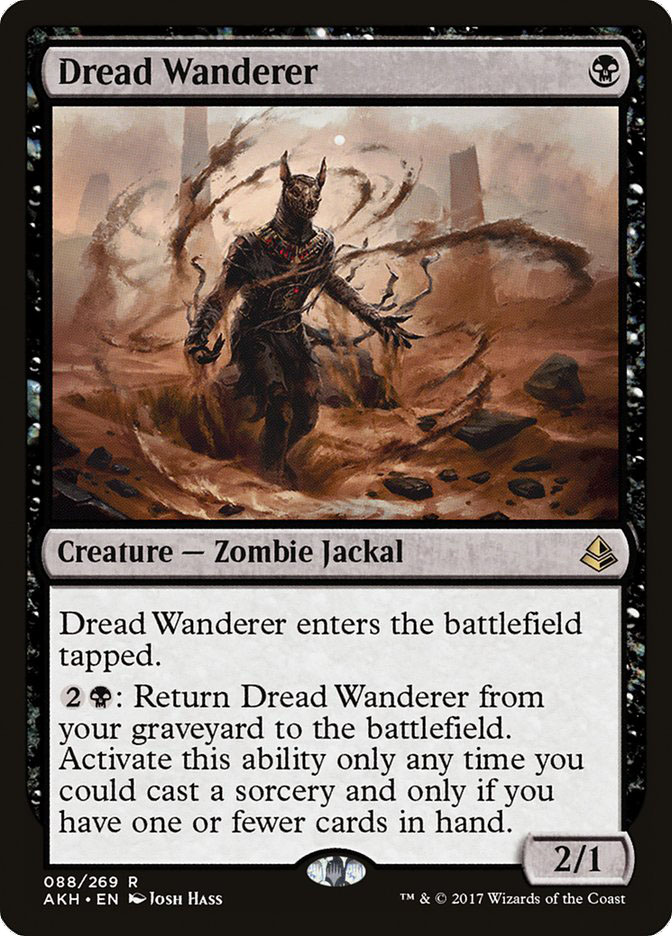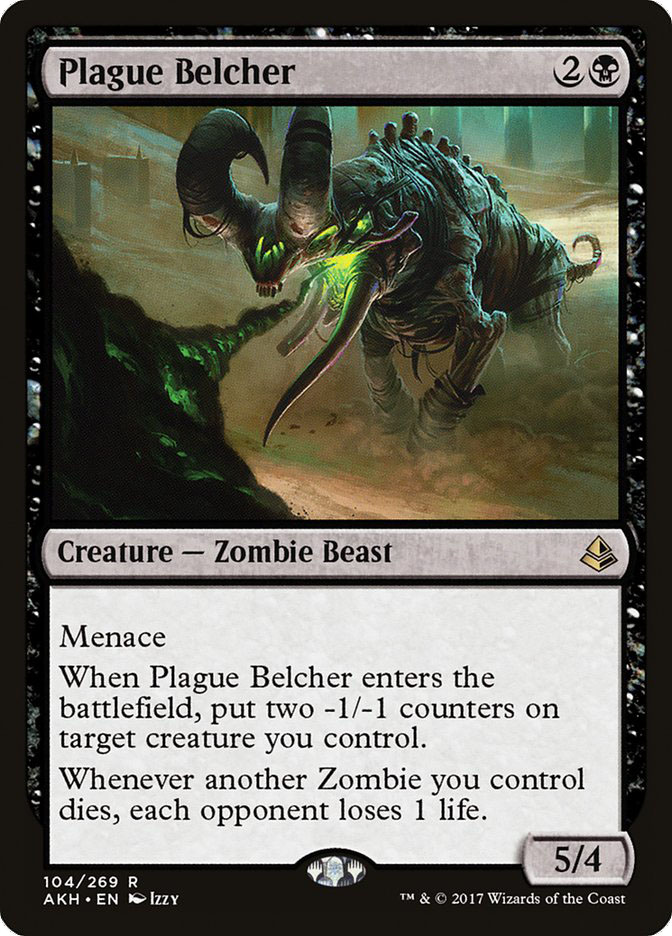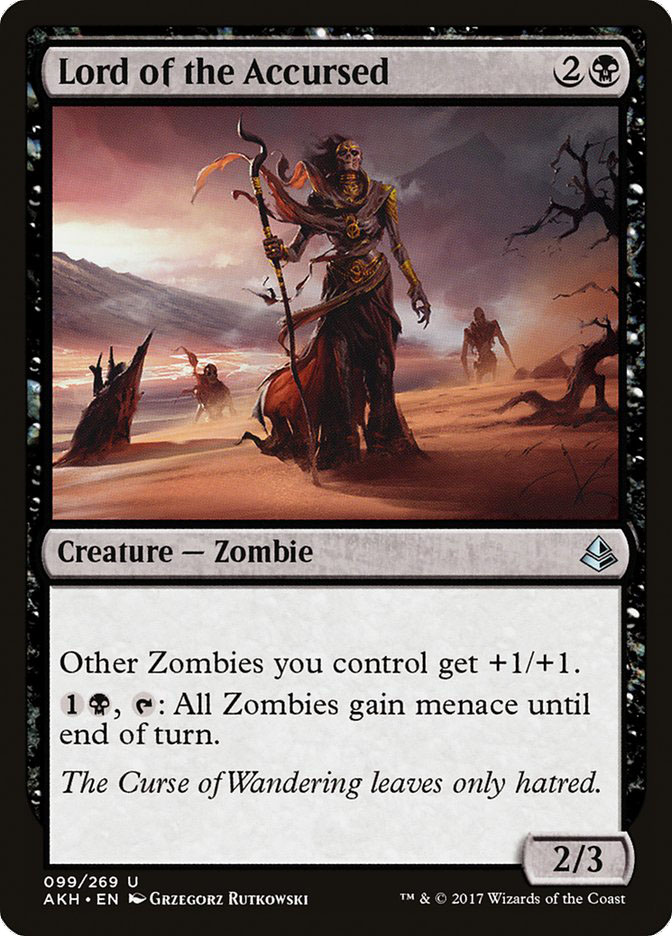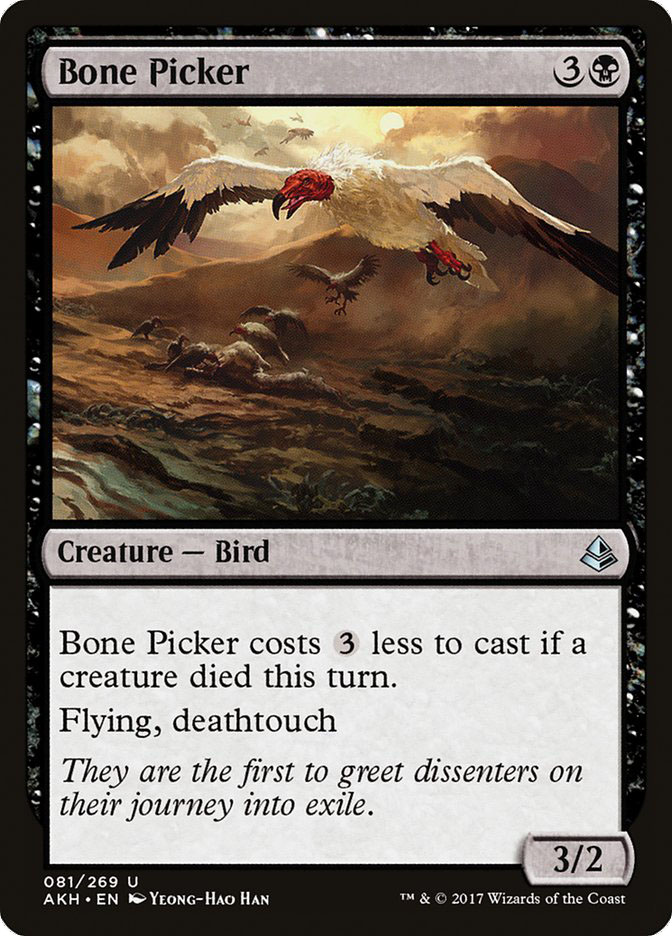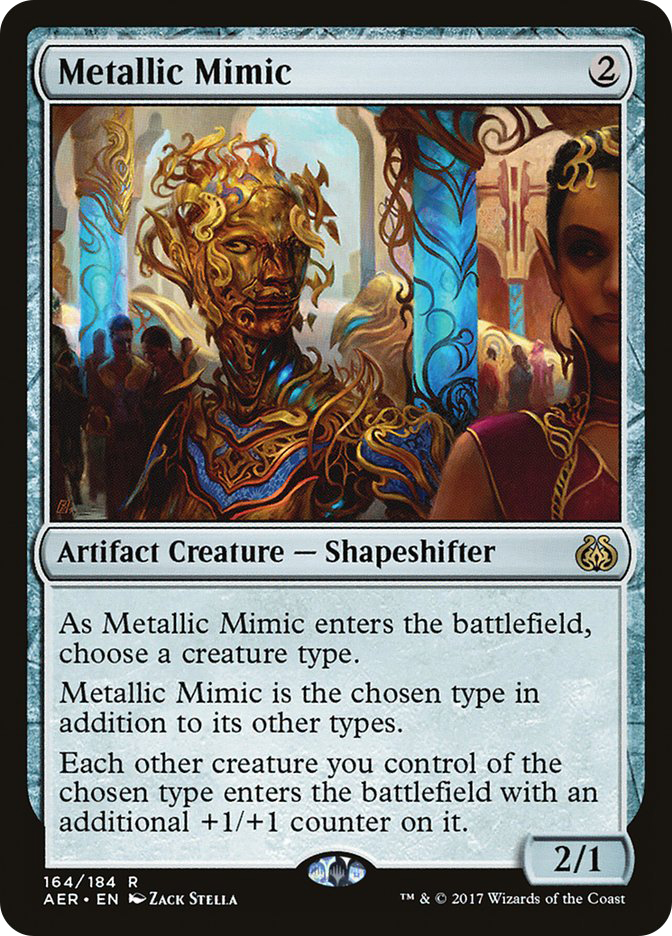Week 1 Amonkhet Standard is in the books, and I’m excited about this format already. We saw Mardu Vehicles dominate #SCGATL, where it was easily the best deck to be playing, but I don’t think we will be saying that it’s the best deck for very long. There are two archetypes that I believe are on the verge of breaking out and being big players in Standard moving forward, but before I get into that, I’ll touch on my #SCGATL experience and some things I learned.
Creatures (14)
- 1 Kalitas, Traitor of Ghet
- 2 Mindwrack Demon
- 2 Tireless Tracker
- 2 Ishkanah, Grafwidow
- 4 Grim Flayer
- 1 Gonti, Lord of Luxury
- 1 Noxious Gearhulk
- 1 Walking Ballista
Planeswalkers (3)
Lands (18)
Spells (25)

I played B/G Delirium, and although this is Tom Ross’s decklist, my deck was just a couple of cards off it. Having the addendum to the Banned and Restricted announcement on Wednesday didn’t leave a lot of time to pick out a deck for #SCGATL, and I played B/G Delirium because it was a deck that I was comfortable with and I believed it had a good Mardu Vehicles matchup, something I was wrong about.
Overall I believe B/G Delirium to be an extremely medium deck right now, and I wouldn’t recommend it to someone who is trying to win their next tournament. Not having access to Emrakul, the Promised End to make sure you win every late-game is a huge blow to the deck, and the gap of the amount of card advantage it now has over Mardu Vehicles is much less than it was previously.
One card I was impressed with in B/G Delirium was Lay Bare the Heart. Early in the tournament Tom and I decided that sideboarding in Lay Bare the Heart would be worth it against Mardu Vehicles and they did a ton of work for him throughout the tournament. The threats that Mardu Vehicles presents are so difficult to deal with when they hit the table that using a discard spell that could remove the certain threat you couldn’t efficiently deal with was crucial. Also, Lay Bare the Heart could clear your opponent’s Unlicensed Disintegration or Fatal Push from their hand to make sure your Kalitas, Traitor of Ghet could stick around on the battlefield and take over the game.
My tournament didn’t last very long, as I overall just didn’t play very well. It’s easy to make excuses when a tournament gets away from you because there are plenty of aspects of a match of Magic: the Gathering that aren’t in your control, but the fact is I didn’t play my best. Although I’m disappointed in myself, which is perfectly reasonable, I’m only going to have it drive me to be more prepared for #SCGKY. It’s important not to get negative when you have a bad tournament because it happens to everyone, but instead to search for mistakes that you made to learn from for the next tournament.
For this tournament I was not prepared to face Mardu Vehicles at all. Not even a little bit. I haven’t played much Standard since the last Pro Tour, and when I have played I haven’t been matched up against Mardu Vehicles, which led me to greatly underestimate the deck. Turns out the Mardu Vehicles decks from Kaladesh Standard and this one are quite a bit different, and Mardu Vehicles is now a midrange deck that plays a hodgepodge of the best cards in the format. I’m not here to break down Mardu Vehicles, though, as I’m positive other, more qualified writers will be doing that this week, but instead I want to touch on some archetypes that I believe are on the verge of breaking out.
Aetherworks Marvel
Although Aetherworks Marvel strategies were in attendance at #SCGATL, I think the optimal lists haven’t been found yet, and I could see Aetherworks Marvel being a big part of the upcoming Pro Tour. With that being said, let’s take a look at some of the Aetherworks Marvel decks that were in attendance.
Creatures (7)
Lands (13)
Spells (40)

Let’s start with Michael Segal’s Temur Aetherworks, as he had the top finish of any Aetherworks Marvel player. Besides Aetherworks Marvel, Michael also used a pair of Dynavolt Towers to have another energy outlet and to be able to interact with his opponent. To this end he had Rogue Refiners and Glimmer of Genius to be able to amass plenty of energy. I’m not sure if I like this plan over planeswalkers such as Chandra, Torch of Defiance like the old Aetherworks Marvel decks had, but the power of Dynavolt Tower is undisputable.
Two parts of the decklist that I really like are the one-of Nissa’s Renewal and the Torrential Gearhulks in the sideboard. Nissa’s Renewal is a great card to not only hit off Aetherworks Marvel, buffering your life total enough to allow you to activate Marvel again, but it’s also the perfect card to ramp into hard-casting an Ulamog, the Ceaseless Hunger. Torrential Gearhulk is simply one of the top five cards of the format, and it can fit right in with Glimmer of Genius. I used to play that two-card package in Temur Aetherworks when preparing for last year’s #SCGINVI, and I could even see the Gearhulks making a maindeck appearance. I really wish Nissa’s Renewal was an instant to be able to Flashback with the Gearhulk, but dreams don’t always come true.
Creatures (16)
Planeswalkers (3)
Lands (14)
Spells (27)
- 4 Forest
- 2 Mountain
- 2 Island
- 4 Aetherworks Marvel
- 4 Woodweaver's Puzzleknot
- 4 Harnessed Lightning
- 4 Attune with Aether
- 1 Baral's Expertise
- 2 Bounty of the Luxa
Sideboard

William Heise went with a more traditional approach with a midrange deck that had Aetherworks Marvel included and used Whirler Virtuoso as his alternate energy outlet. This decklist is extremely similar to Temur Aetherworks decks from last year, but with Ulamog, the Ceaseless Hunger over Emrakul, the Promised End as well as other small upgrades.
Bounty of the Luxa was a card I wrote off as Constructed-playable initially, as I didn’t believe it would outperform various planeswalkers for the same mana investment, but I’m starting to come around on it. Sure, it’s beyond poor if you’re behind, which isn’t a trait I look for in cards, but if you’re not under pressure, Bounty of the Luxa can provide an insane amount of cards and mana over a long game. I wouldn’t be surprised to continue to see Bounty of the Luxa in Aetherworks Marvel decks, and it could pair well with Nissa’s Renewal to help hard-cast Ulamog, the Ceaseless Hunger.
Creatures (5)
Lands (13)
Spells (42)

I’ve been quite impressed recently at Zan Syed’s deck choices and play at Standard Opens on the SCG Tour. Last season he was ahead of the curve with Zombies builds, and this weekend he came up with an interesting Bant Aetherworks deck that is basically a U/W Control deck that uses the Kaladesh mythic as a win condition.
The one card choice that I’m not a fan of is Aether Meltdown. I understand why Zan played it, as it can slow down your opponent while gaining you energy, but I simply don’t think it’s a good enough card. I would prefer playing a few more instants, such as Anticipate, Immolating Glare, or counterspells, and then have some number of Torrential Gearhulk to include at the top-end of the deck.
Creatures (11)
Lands (22)
Spells (27)
- 4 Kozilek's Return
- 4 Aetherworks Marvel
- 4 Woodweaver's Puzzleknot
- 3 Harnessed Lightning
- 4 Glassblower's Puzzleknot
- 4 Attune with Aether
- 4 Cathartic Reunion
Sideboard

Fellow DFW Metroplex player Jeffrey Serwinski finished in the Top 16 of the Standard Classic with a combo version of Aetherworks Marvel, one that I think has some merits moving forward in a Mardu Vehicles-dominated format. He didn’t drop a game to Mardu Vehicles during the tournament and never even sideboarded a card against them. His sideboard is admittedly rudimentary, as he put the deck together quickly the morning before the tournament, but let’s take a look at what’s going on in the maindeck.
No Emrakul, the Promised End? No problem. Ulamog, the Ceaseless Hunger and Kozilek, the Great Distortion are still in Standard, and Jeffrey used a full eight copies of powerful Eldrazis to make sure each Aetherworks Marvel activation would be game-changing. The downside to having this many top-end cards is that you are entirely reliant on finding Aetherworks Marvel, but thankfully Jeffrey’s deck has the velocity to find it reliably.
Discarding two cards isn’t much of a downside for a combo deck that is built to have plenty of dead draws, and therefore Cathartic Reunion is simply “two mana: draw three cards” most of the time, which is way above the curve as far as card draw is concerned. It’s always awful to get a Cathartic Reunion countered, so the downside is high, but it has the best card draw rate in the format.
Glassblower’s Puzzleknot was used in many early builds of Aetherworks Marvel decks from Pro Tour Kaladesh but was quickly abandoned; it is simply not a very good card on its own, and Vessel of Nascency was a more valuable card when paired with Emrakul, the Promised End. However, if your only goal is casting and activating Aetherworks Marvel as soon as possible, then Glassblower’s Puzzleknot deserves another look. A turn 1 Attune with Aether, turn 2 Glassblower’s Puzzleknot and turn 3 cracking of the Puzzleknot gives you enough energy to activate Aetherworks Marvel while being able to scry 2 twice to help find it. It isn’t pretty, but it can get the job done.
The sideboard is built with only blue control decks in mind, and the Glimmer of Genius should be replaced. The Dispels are the best card at fighting counterspells, but I know he lost a mirror match because his opponent had Negate and he didn’t, so a combination of the two is more likely to be appropriate. If you have a local store that is filled with Mardu Vehicles and want to beat the current best deck of the format, then this version of Aetherworks Marvel may be for you.
Zombies
The other strategy that I’m calling the next breakout deck of Standard is Zombies, either Mono-Black or B/W. We predictably didn’t see many Zombies decks at #SCGATL with the small amount of time to put together new decks, but the ones we did see performed pretty well.
Creatures (30)
- 2 Relentless Dead
- 4 Diregraf Colossus
- 4 Cryptbreaker
- 4 Scrapheap Scrounger
- 4 Lord of the Accursed
- 4 Plague Belcher
- 4 Dread Wanderer
- 4 Wayward Servant
Planeswalkers (2)
Lands (20)
Spells (8)

Zac Caudillo had the best finish from any Zombies player, finishing fourteenth with B/W Zombies. The very small white splash is only for Wayward Servant in the maindeck, but Zac has plenty of white cards in the sideboard, most notably Binding Mummy to get through battlefield stalls like Ishkanah, Grafwidow.
We haven’t had a top-tier aggressive tribal deck in Standard in some time, but Amonkhet sure did deliver for Zombies. Diregraf Colossus is a forgotten card from Shadows over Innistrad that has an insane rate on its own, but it needs the right tools around it to see play. Those tools now exist, and Diregraf Colossus may be the most-improved card from Amonkhet‘s printing because now there are enough quality Zombie creatures in place to make a competitive deck.
The heart of the deck that was added with Amonkhet has given the strategy enough quality tools to fill out the decklist. Dread Wanderer pairs with Scapheap Scrounger to give the deck reach against removal-heavy decks, while Plague Belcher and Lord of the Accursed add in sheer power that will win the midrange race against other decks.
Although Zombies was an underrepresented archetype at SCG Atlanta, it has been putting up some major results on Magic Online throughout the past few days. For example, four of the ten published decklists from Monday’s 5-0 lists were Zombies decks, and I think we’re just seeing the beginning of them.
Creatures (30)
- 4 Relentless Dead
- 4 Diregraf Colossus
- 4 Cryptbreaker
- 2 Scrapheap Scrounger
- 4 Lord of the Accursed
- 4 Plague Belcher
- 4 Dread Wanderer
- 4 Wayward Servant
Planeswalkers (2)
Lands (20)
Spells (8)

Looks like Klurgsen used Zac Caudillo’s decklist as a template and made a couple of changes, most notably the removal of the sideboard Gideon, Ally of Zendikar. It was quite odd to see the Gideons in the original list with only ten white sources, and I don’t expect to see Gideon return to the “stock” decklist anytime soon.
Creatures (29)
- 2 Kalitas, Traitor of Ghet
- 2 Relentless Dead
- 4 Diregraf Colossus
- 4 Cryptbreaker
- 4 Lord of the Accursed
- 3 Plague Belcher
- 4 Dread Wanderer
- 4 Wayward Servant
- 2 Bone Picker
Planeswalkers (2)
Lands (21)
Spells (8)

Obviously TheProgram52 didn’t get my memo about Gideon, Ally of Zendikar not returning to the sideboard!
The biggest change made here was adding in two each of Bone Picker and Kalitas, Traitor of Ghet to the maindeck over the playset of Scrapheap Scrounger, which made it to the sideboard, which is surprising. Scrapheap Scrounger is a format-defining card, and I would think it’s good enough to be included in the maindeck going forward. Unfortunately, Bone Picker isn’t a Zombie Bird, as I think that could fit well enough with the flavor of the card.
Creatures (22)
- 4 Relentless Dead
- 4 Diregraf Colossus
- 4 Cryptbreaker
- 4 Metallic Mimic
- 2 Lord of the Accursed
- 4 Dread Wanderer
Lands (24)
- 21 Swamp
- 3 Westvale Abbey
Spells (14)

Lennysill cut the white from the deck entirely, which isn’t too surprising, but also changed up the creature package.
It may be Metallic Mimic’s time to shine with fewer Walking Ballistas in the current metagame and fewer Manglehorns than originally perceived when Amonkhet was revealed. With four Dark Salvations and four copies of Liliana’s Mastery, Lennysill is trying to go wide with Zombie tokens and use Westvale Abbey to turn them into a Profane Prince if the battlefield gets clogged up.
I think we’re just scratching the surface for both Aetherworks Marvel and Zombie tribal decks, and these two archetypes are my picks for the next breakout archetypes in Standard. Mardu Vehicles is currently the best midrange deck, but it’s possible to go under or over it with success. The creatures from Mardu Vehicles are terrible at blocking and it’s not a good deck at catching up when it’s behind, making an aggressive deck like Zombies attractive. Kozilek’s Return and Ulamog, the Ceaseless Hunger are devastating to Mardu Vehicles as well, making Aetherworks Marvel primed for a comeback.


